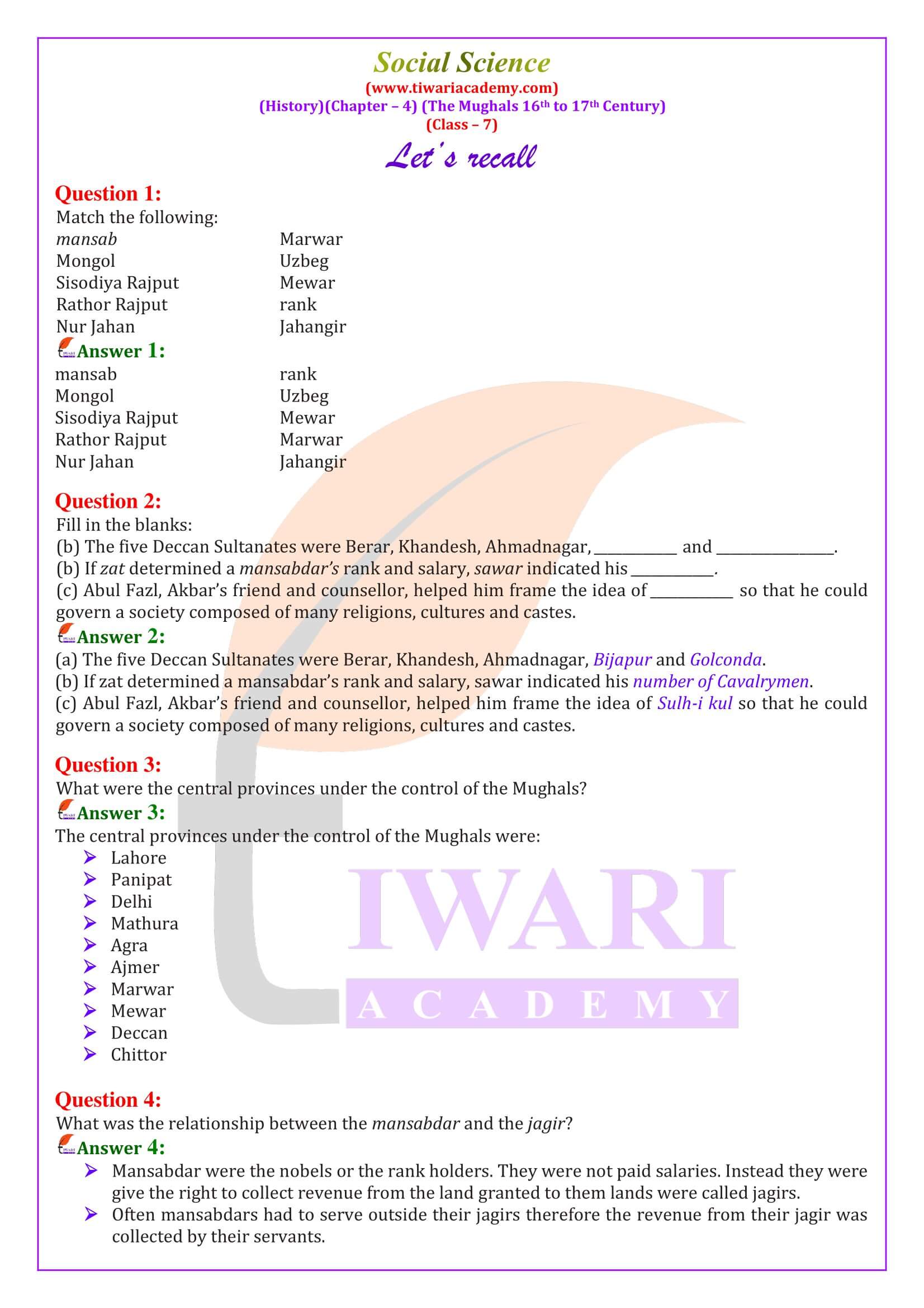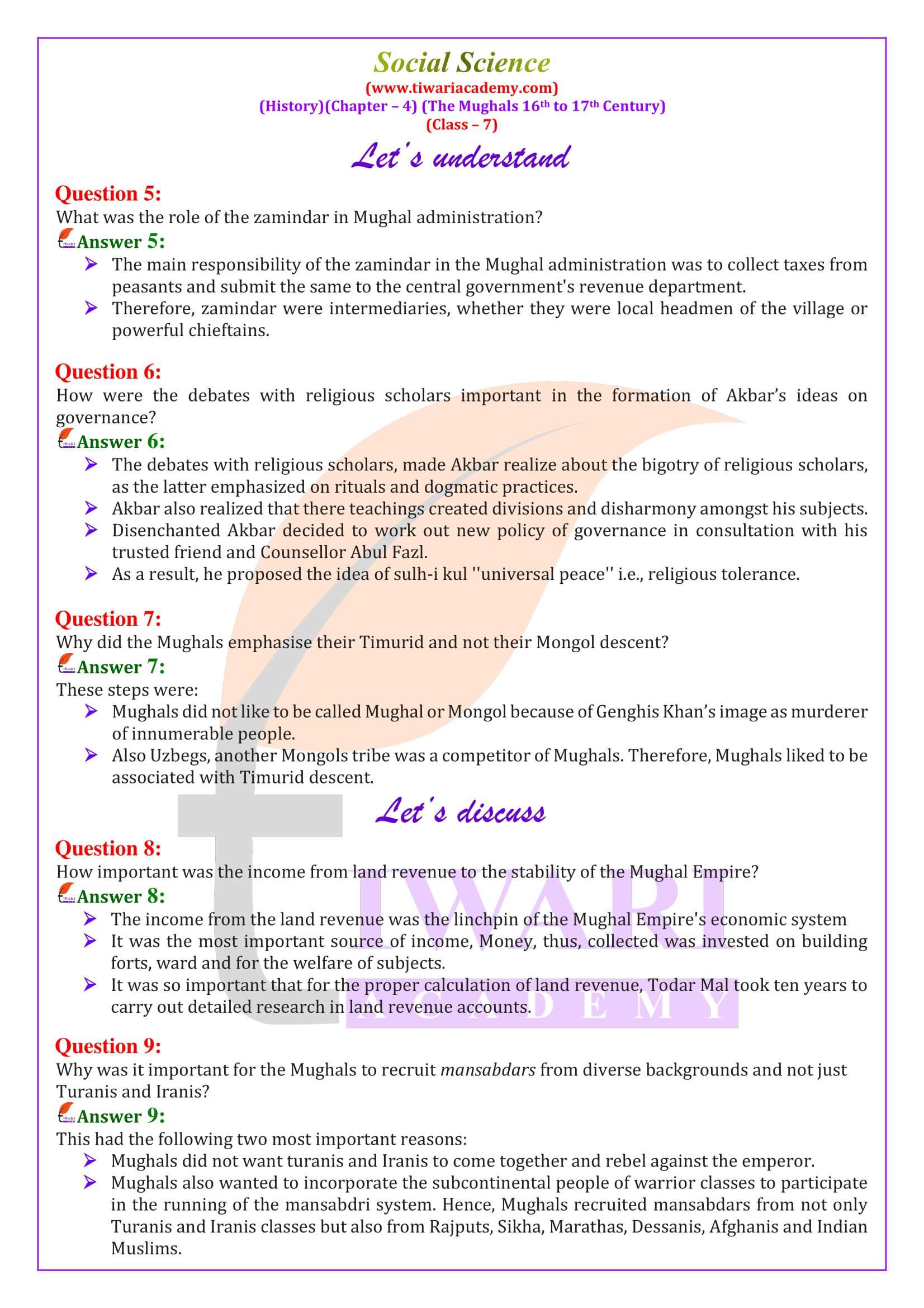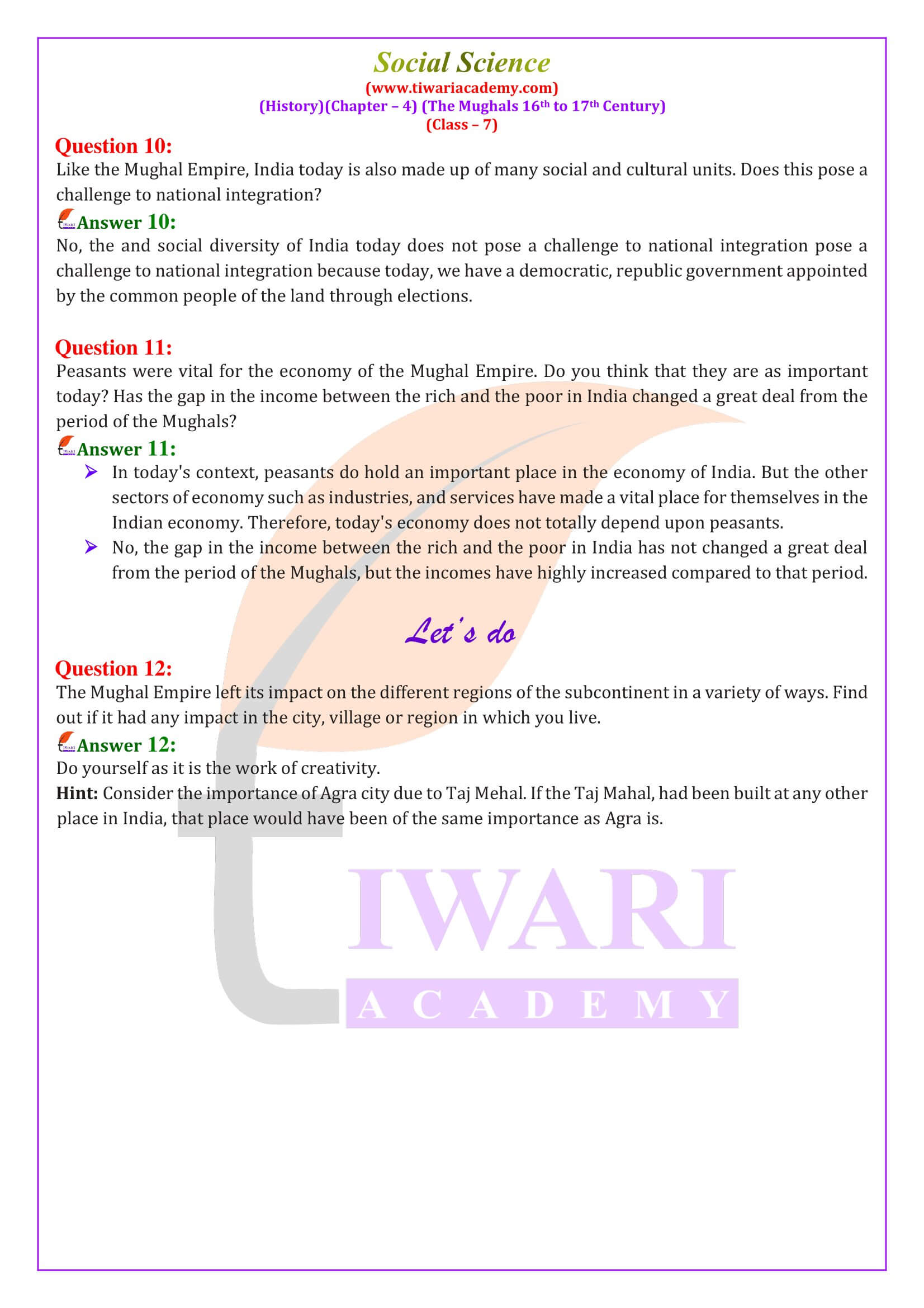NCERT Solutions for Class 7 Social Science History Chapter 4 The Mughals 16th to 17th Century in English Medium and Hindi Medium to View online or download updated for new academic session 2024-25 based on new NCERT Books. All the NCERT Solutions 2024-25 are based on updated NCERT Books 2024-25 following the latest CBSE Syllabus for the academic session 2020–2021. Download NCERT Solutions Apps for offline use free without any login or registration.
NCERT Solutions for Class 7 Social Science History Chapter 4
Class 7th History Chapter 4 Solution Question Answers
| Class: 7 | History |
| Subject: | Social Science |
| Chapter 4: | The Mughals: 16th to 17th Century |
| Academic Session: | 2024-25 |
| Medium: | English and Hindi Medium |
Class 7 History Chapter 4 Question Answers
CBSE NCERT Solutions for Class 7 Social Science History Chapter 4 The Mughals 16th to 17th Century in Hindi and English Medium updated format for 2024-25, is given below. Download NCERT Solutions 2024-25 and 7th All subjects app for new session 2024-25.
Class 7 History Chapter 4 in English Medium
Class 7 History Chapter 4 Extra Questions
Who were the Mughals?
The Mughals were descendants of two great lineages of rulers. From their mother’s side they were descendants of Genghis Khan (died 1227), the Mongol ruler who ruled over parts of China and Central Asia. From their father’s side they were the successors of Timur (died 1404), the ruler of Iran, Iraq and modern-day Turkey.
What was Mughal Military Campaigns?
Babur, the first Mughal emperor (1526-1530), succeeded to the throne of Ferghana in 1494 when he was only 12 years old. He was forced to leave his ancestral throne due to the invasion of another Mongol group, the Uzbegs. After years of wandering he seized Kabul in 1504. In 1526 he defeated the Sultan of Delhi, Ibrahim Lodi, at Panipat and captured Delhi and Agra.
How was the Mughal Relations with Other Rulers?
Take a look at Table 1 once again. You will notice that the Mughal rulers campaigned constantly against rulers who refused to accept their authority. But as the Mughals became powerful many other rulers also joined them voluntarily. The Rajputs are a good example of this. Many of them married their daughters into Mughal families and received high positions. But many resisted as well.
What do you meant by Mansabdars?
As the empire expanded to encompass different regions the Mughals recruited diverse bodies of people. From a small nucleus of Turkish nobles (Turanis) they expanded to include Iranians, Indian Muslims, Afghans, Rajputs, Marathas and other groups. Those who joined Mughal service were enrolled as mansabdars.
What were Major campaigns and events?
1526 – defeated Ibrahim Lodi and his Afghan supporters at Panipat.
1527 – defeated Rana Sanga, Rajput rulers and allies at Khanua.
1528 – defeated the Rajputs at Chanderi; Established control over Agra and Delhi before his death.
Important Notes on 7th History Chapter 4
The Mughal Traditions of Succession
The Mughals did not believe in the rule of primogeniture, where the eldest son inherited his father’s estate. Instead they followed the Mughal and Timurid custom of coparcenary inheritance, or a division of the inheritance amongst all the sons.
Do you Know?
Class 7 Social Science – History Chapter 4 – Important Questions
What were the central provinces under the control of the Mughals?
The central provinces under the control of the Mughals were: Lahore Panipat Delhi Mathura Agra Ajmer Marwar Mewar Deccan Chittor
What was the relationship between the mansabdar and the jagir?
Mansabdar were the nobels or the rank holders. They were not paid salaries. Instead they were give the right to collect revenue from the land granted to them lands were called jagirs. Often mansabdars had to serve outside their jagirs therefore the revenue from their jagir was collected by their servants.
What was the role of the zamindar in Mughal administration?
The main responsibility of the zamindar in the Mughal administration was to collect taxes from peasants and submit the same to the central government’s revenue department. Therefore, zamindar were intermediaries, whether they were local headmen of the village or powerful chieftains.
How were the debates with religious scholars important in the formation of Akbar’s ideas on governance?
The debates with religious scholars, made Akbar realize about the bigotry of religious scholars, as the latter emphasized on rituals and dogmatic practices. Akbar also realized that there teachings created divisions and disharmony amongst his subjects. Disenchanted Akbar decided to work out new policy of governance in consultation with his trusted friend and Counsellor Abul Fazl. As a result, he proposed the idea of sulh-i kul ”universal peace” i.e., religious tolerance.
Why did the Mughals emphasise their Timurid and not their Mongol descent?
These steps were: Mughals did not like to be called Mughal or Mongol because of Genghis Khan’s image as murderer of innumerable people. Also Uzbegs, another Mongols tribe was a competitor of Mughals. Therefore, Mughals liked to be associated with Timurid descent.
How important was the income from land revenue to the stability of the Mughal Empire?
The income from the land revenue was the linchpin of the Mughal Empire’s economic system It was the most important source of income, Money, thus, collected was invested on building forts, ward and for the welfare of subjects. It was so important that for the proper calculation of land revenue, Todar Mal took ten years to carry out detailed research in land revenue accounts.
Why was it important for the Mughals to recruit mansabdars from diverse backgrounds and not just Turanis and Iranis?
This had the following two most important reasons: Mughals did not want turanis and Iranis to come together and rebel against the emperor. Mughals also wanted to incorporate the subcontinental people of warrior classes to participate in the running of the mansabdri system. Hence, Mughals recruited mansabdars from not only Turanis and Iranis classes but also from Rajputs, Sikha, Marathas, Dessanis, Afghanis and Indian Muslims.
No, the and social diversity of India today does not pose a challenge to national integration pose a challenge to national integration because today, we have a democratic, republic government appointed by the common people of the land through elections.
Peasants were vital for the economy of the Mughal Empire. Do you think that they are as important today? Has the gap in the income between the rich and the poor in India changed a great deal from the period of the Mughals?
In today’s context, peasants do hold an important place in the economy of India. But the other sectors of economy such as industries, and services have made a vital place for themselves in the Indian economy. Therefore, today’s economy does not totally depend upon peasants. No, the gap in the income between the rich and the poor in India has not changed a great deal from the period of the Mughals, but the incomes have highly increased compared to that period.





